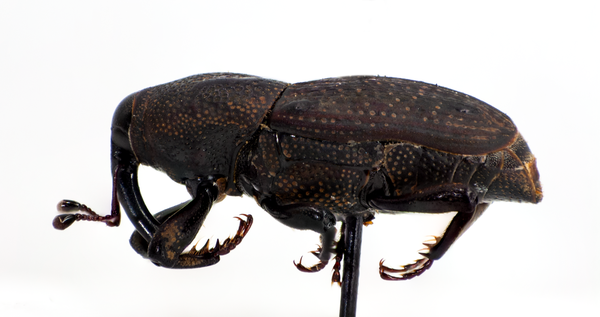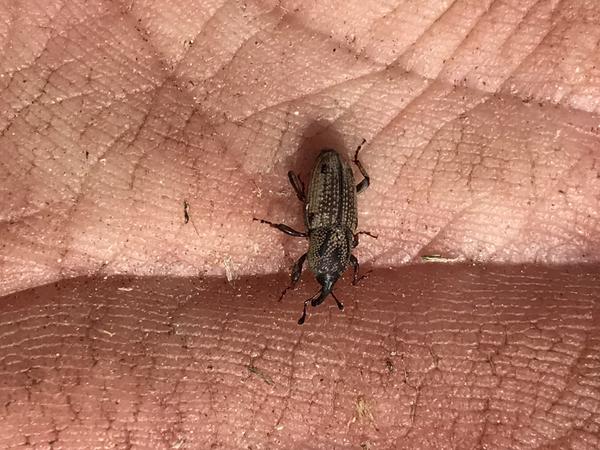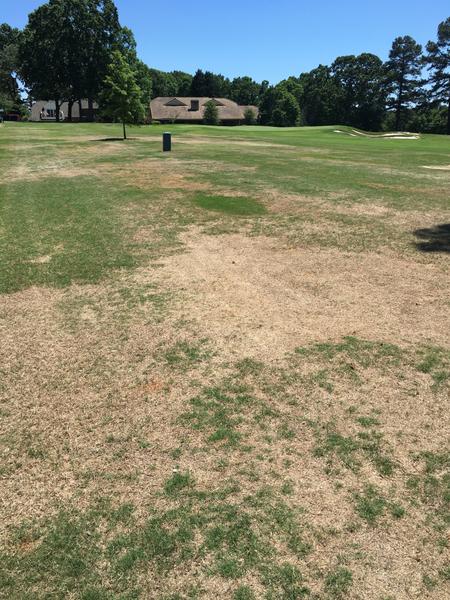Hunting Billbugs in Turf
en Español / em Português
El inglés es el idioma de control de esta página. En la medida en que haya algún conflicto entre la traducción al inglés y la traducción, el inglés prevalece.
Al hacer clic en el enlace de traducción se activa un servicio de traducción gratuito para convertir la página al español. Al igual que con cualquier traducción por Internet, la conversión no es sensible al contexto y puede que no traduzca el texto en su significado original. NC State Extension no garantiza la exactitud del texto traducido. Por favor, tenga en cuenta que algunas aplicaciones y/o servicios pueden no funcionar como se espera cuando se traducen.
Português
Inglês é o idioma de controle desta página. Na medida que haja algum conflito entre o texto original em Inglês e a tradução, o Inglês prevalece.
Ao clicar no link de tradução, um serviço gratuito de tradução será ativado para converter a página para o Português. Como em qualquer tradução pela internet, a conversão não é sensivel ao contexto e pode não ocorrer a tradução para o significado orginal. O serviço de Extensão da Carolina do Norte (NC State Extension) não garante a exatidão do texto traduzido. Por favor, observe que algumas funções ou serviços podem não funcionar como esperado após a tradução.
English
English is the controlling language of this page. To the extent there is any conflict between the English text and the translation, English controls.
Clicking on the translation link activates a free translation service to convert the page to Spanish. As with any Internet translation, the conversion is not context-sensitive and may not translate the text to its original meaning. NC State Extension does not guarantee the accuracy of the translated text. Please note that some applications and/or services may not function as expected when translated.
Collapse ▲Description
Hunting billbug adults measure 0.3-0.4 inches in length and are black, charcoal gray, or brownish in color (Figure 1). The distinguishing characteristic for this species is a smooth, non-punctated Y-shaped area behind the head and parenthesis-like curved markings on the sides of the pronotum (Figure 2). They usually overwinter as adults or as partially mature larvae in the thatch, soil crevices, under mulch or leaf litter. The adults emerge from their overwintering sites as temperatures increase in the spring and will feed and mate. They are active at night and will feign death when disturbed. Damage by adults is most prominent in spring, but can also be seen in the fall (Figure 3). The adults will lay oblong, creamy white eggs from May into September. The eggs take 3-10 days to hatch. The larvae that hatch are white, legless and have a brown head capsule; they feed on the turfgrass stems and as they mature the crown, roots, and stolons. Larvae are most common from May to October. At full maturity, 3-5 weeks after egg hatch, the larvae measure 0.2-0.4 inches in length. They will then pupate in the soil and 3-7 days later the adult hunting billbug emerges.
Chemical Control
To control adult populations apply insecticides in spring when adults emerge from their overwintering sites, but before they lay their eggs. Treat no later than 3 weeks after adults become active. The use of insecticides for adult control includes bifenthrin (Talstar, Menace, etc), deltamethrin (Deltagard), lambda-cyhalothrin (Scimitar or Battle), or imidacloprid (Merit). The use of insecticides for larval control includes clothianidin (Arena) or thiamethoxam (Meridian). The use of insecticides for both adults and larval control include chlorantraniliprole (Acelepryn), clothianidin + bifenthrin (Aloft), or imidacloprid + bifenthrin (Allectus, Atera). Check the label for rates and application methods. Applications in the spring are preventative and should only be made on sites with a history of hunting billbugs. To control larval populations apply insecticides 6 weeks after the adults become active. At this point the larvae are in the root zone and are the most vulnerable. Be sure to water the insecticide in after application to insure insecticide movement through the thatch.
| Insecticide and Formulation | Amount per 1,000 sq ft | Precaution and Remarks |
|---|---|---|
| bifenthrin* (Menace, Talstar, others) F, GC; G form also available | 0.25 to 0.5 fl oz | Use GC formulation for golf courses. |
| chlorantraniliprole (Acelepryn) | 0.184 to 0.46 fl oz | |
| chlorpyrifos* (Dursban) 50 WSP, Pro | See label | For use on golf courses; check new label. |
| clothianidin (Arena) .5G 50 WDG | 14 to 22 oz 0.15 to 0.22 oz | |
| chlothianidin + bifenthrin (Aloft) GC SC LC SC GC G LC G | See label 0.27 to 0.44 fl oz 0.27 to 0.54 fl oz 1.8 to 3.6 lb 1.8 to 3.6 lb | |
| deltamethrin (Deltagard) G | 2 to 3 lb/1,000 ft | |
| imidacloprid* (Merit) 75 WSP | 3 to 4 level tsp | Make application prior to egg hatch. |
| imidacloprid + bifenthrin (Allectus, Atera) | See label | Rate varies with pest. Different formulations for different sites. |
| lambda-cyhalothrin* (Battle, Scimitar, Cyonara) | See label | Observe restrictions near water. |
| propoxur (Baygon) 1.5 fl oz | 1 pt | Treat area thoroughly. Use at least 15 gallons water per 1,000 sq ft. Do not allow spray mixture to stand overnight. Mow grass before treatment. |
| thiamethoxam (Meridian) 0.33 G 25 WG | 60 to 80 lb/acre 12.7 to 17 oz/acre | Optimum control when applied from peak flight of adults to peak of egg hatch. Also suppresses mole crickets and chinch bugs. |
| Dinotefuran (Zylam) 20SG | 1 oz per 1000 ft2 |
References
- Common name: hunting billbug, scientific name: Sphenophorus venatus vestitus Chittenden (Insecta: Coleoptera: Curculionidae). Robert E. Woodruff, R. E. 2005 (revised). Featured Creatures. Entomology & Nematology, FDACS/DPI, EDIS. Publication EENY-207.
- Hunting Billbug: An Emerging Pest of Texas Turfgrass. Reinert, J. and B. M. Drees. 2011. Texas A&M AgriLife Extension, Landscape IPM.
- 2018 Pest Control for Professional Turfgrass Managers. Bowman, D. et al. 2017. NC State Extension Publication AG-408. 81 pp.
- Extension Plant Pathology Publications and Factsheets
- Horticultural Science Publications
- North Carolina Agricultural Chemicals Manual
For assistance with a specific problem, contact your local Cooperative Extension Center





